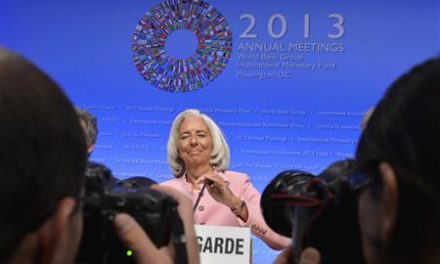The Greek government-debt crisis, also known as the Greek Depression, is part of the ongoing Eurozone crisis. It was triggered by the arrival of the global economic recession in October, 2008.
Since then, a combination of structural weaknesses in the Greek economy—and a decade of overly high structural deficits and debt-to-gross domestic product (or GDP) levels on public accounts—have raised investor concerns regarding Greece’s ability to meet its debt obligations. The debt-to-GDP ratio for Greece increased from a 112.9% in 2008 to 148.3% in 2010. It increased to 170.3% in 2011.
Investor confidence weakened. It was evident in the widening of bond yield spreads for Greece compared to the other countries in the Eurozone—most importantly Germany. The performance of the Global X FTSE Greece 20 ETF (GREK) also serves as a good indicator about the investment climate in Greece. It invests primarily in Greek stocks.
The bailout
In April, 2010 the Greek government debt was downgraded to junk bond status. This sent bond yields so high, that capital markets were no longer available as a funding source for Greece.
As a result, Greece was offered two bailout packages by the European Union (or EU) and the International Monetary Fund (or IMF). The first on May 2, 2010, worth ~$150 billion and the second in October, 2011 worth ~$174 billion. Both bailout packages were conditional. Greece had to comply with the following three key points:
- Implementation of austerity measures to restore the fiscal balance.
- Privatization of government assets worth ~$67 billion by the end of 2015 to keep the debt pile sustainable.
- Implementation of outlined structural reforms to improve competitiveness and growth prospects.
The second bailout was also conditional. All private creditors holding Greek government bonds had to sign a deal accepting lower interest rates and a 53.5% face value loss, in addition to the simple package.
Measures to relieve debt
In December, 2012 the Euro group decided not to transfer another bailout loan to help Greece. Instead, it offered Greece a set of debt relief measures including buying private sector involvement (or PSI) bonds. A debt buyback by the Greek government of ~50% of the remaining PSI bonds also helped lower the debt-to-GDP ratio by 10.6%. This helped the country obtain a sustainable debt outlook for the future.
Given the major role of international aid and relief measures, Greece has managed to recover some since the depression began in 2008. The next parts in this series will discuss the improving investment climate in Greece, the country’s return to the debt market with its April offering, and its recent $2.04 billion issue in three-year notes managed by Bank of America Merrill Lynch (BAC), Citigroup (C), Deutsche Bank, Goldman Sachs (GS) and JPMorgan Chase & Co. (JPM).
Current state of the Greek economy
As of 2013, Greece is the 13th largest economy in the European Union (or EU). The EU has 28 members. The Greek economy mainly revolves around the service sector. It contributed close to 80% of the national economic output, followed by industry at 16%. Agriculture contributed ~4% of the national economic output in 2013, according to the World Bank.

Improving fundamentals
The strong export of goods and services enabled Greece to clock a high current account surplus of 2% last year. Other data including retail sales, car sales, industrial output, and construction and manufacturing activity indicates that the economy has probably bottomed out. The economy is expected to move out of recession this year.
Domestic demand in Greece has started to improve. It’s evident in the increase in private consumption in the first quarter on year-over-year (or YoY) terms for the first time in four years. Consumers’ unemployment expectations have declined. Greece has also made structural reforms. It has reduced nominal unit labor costs to below the average in the Euro area. This implies that competitiveness has been strengthened.
Greece’s debt-to-gross domestic product (or GDP) ratio increased to 174% in 2013. However, according to the International Monetary Fund (or IMF), it will stabilize and slowly start to decline from 2015. Overall, Greece seems to be moving towards positive yearly growth in GDP.
The Global X FTSE Greece 20 ETF (GREK) provides exposure to Greek stocks.
Greece’s return to the debt market
With improving fundamentals and investor confidence, Greece successfully returned to debt markets in April this year with a five-year bond issue. It attracted ~$27 billion in orders against an issue size of ~$4 billion.
Greece has also recently raised $2.04 billion in three-year notes with Bank of America Merrill Lynch (BAC), Citigroup (C), Deutsche Bank, Goldman Sachs (GS) and JPMorgan Chase & Co. (JPM) managing the sale. Continue reading the next part of this series to learn about the recent debt issue and Greece’s return to the debt market.
Investing in Greece
In April this year, Greece successfully returned to debt markets with a five-year bond issue. It raised ~$4 billion at a yield of 4.95%. The issue was oversubscribed seven times.
On Wednesday, July 9, Greece announced another bonds issue—a second since its international bailout four years ago. The move marks the country’s efforts to recover from a crippling debt crisis that left it on the brink of a Eurozone exit.

On July 10, Greece raised $2.04 billion in three-year notes at an average yield of 3.5%. Bank of America Merrill Lynch (BAC), Citigroup (C), Deutsche Bank, Goldman Sachs (GS), and JPMorgan Chase & Co. (JPM) are the banks that were hired to manage the sale. The deal is Greece’s second in three months following a four-year hiatus when the country needed two bailout packages and a debt restructuring to avoid financial collapse.
ECB acting as a catalyst
On Thursday, June 5, at its policy meeting, the European Central Bank (or ECB) reduced the key re-financing rate by 0.1% to a record low of 0.15% in an effort to keep borrowing costs in the Eurozone depressed. The goal was to boost the region’s struggling economy. Also, the deposit rate was moved into negative territory. It was reduced from zero to –0.1%. This made the ECB the first major central bank to have a negative interest rate on its deposits.
This means that the ECB would charge lenders to park cash reserves at the central bank. The move encouraged banks to lend out cash to stimulate investment and growth because holding excess cash as reserves would now cost them.
Government bond yields at record lows in the Eurozone
That pushed the Eurozone government bond yields even lower. In June, Spanish ten-year bonds fell to a record low of 2.58%. Italian ten-year bonds hit a fresh low of 2.70%. Greek ten-year bonds—which yielded more than 30% in 2012—also dropped to 5.53% in June.
Improving economic conditions in Greece are also evident in the performance of recent offerings by companies in Greece. For example, in April this year, Intralot SA (IRLTY), a Greek gaming company, achieved 11x over-subscription on its second bond issue in less than a year. It had a triple-digit order from one leading institutional investor.
Intralot supplies integrated gaming, transaction processing systems, game content, and interactive gaming services to state-licensed gaming organizations worldwide. Around the same time, Public Power Corporation SA raised as much as $935 million in a two-tranch high-yield bond issue rated B by Standard & Poor’s.
From an emerging markets point of view, Greece is the most interesting market. The Global X FTSE Greece 20 ETF (GREK) seeks to expose Greek stocks by tracking the FTSE/ATHEX Custom Capped Index. The fund’s return is up 9.42% in the past year—August 12, 2013–August 12, 2014.
Unlike Greece, Spain—the fifth country among the PIIGS (or Portugal, Ireland, Italy, Greece, and Spain) quintet—has already started its growth trajectory. In the next part of the series, we’ll discuss why Spain is an attractive investment destination.




















